
by Tracy Vanity
The Dark Ages were full of amazing things like kings and queens, the plague, and some of the most inventive methods of torture that are still used today.
Here are some of the most inventive methods of old school torture.

The rack is a torture device consisting of a rectangular, usually wooden frame, slightly raised from the ground, with a roller at one or both ends. The victim’s ankles are fastened to one roller and the wrists are chained to the other. As the interrogation progresses, a handle and ratchetattached to the top roller are used to very gradually stepwise increase the tension on the chains, inducing excruciating pain. By means of pulleys and levers this roller could be rotated on its own axis, thus straining the ropes until the sufferer’s joints were dislocated and eventually separated. Additionally, if muscle fibres are stretched excessively, they lose their ability to contract, rendering them ineffective.
One gruesome aspect of being stretched too far on the rack is the loud popping noises made by snapping cartilage, ligaments or bones. One powerful method for putting pressure upon prisoners was to force them to watch someone else being subjected to the rack. Confining the prisoner on the rack enabled further tortures to be simultaneously applied, typically including burning the flanks with hot torches or candles or using pincers made with specially roughened grips to tear out the nails of the fingers and toes.
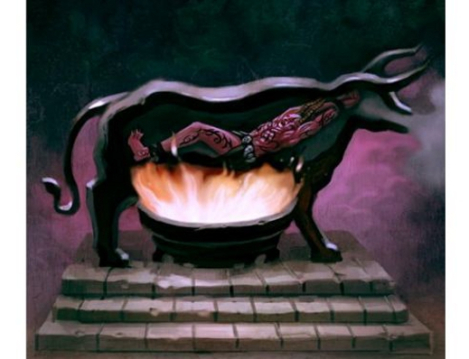
The brazen bull, bronze bull, or Sicilian bull, was a torture and execution device designed in ancient Greece.[1] According to Diodorus Siculus, recounting the story in Bibliotheca historica, Perillos of Athens invented and proposed it to Phalaris, the tyrant of Akragas, Sicily, as a new means of executing criminals.[2] The bull was made entirely of bronze, hollow, with a door in one side.[3] The bull was in the form and size of a real life bull and had an acoustic apparatus that converted screams into the sound of a bull. The condemned were locked in the device, and a fire was set under it, heating the metal until the person inside roasted to death.
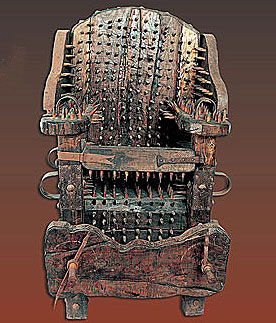
The Iron Chair is a torture device that has several different variations depending on its origin and use throughout history. It also has many names – the Chinese torture chair, the torture chair, and the Iron Chair. In all cases, the victim was seated on several strips or plates of brass and placed over an open flame and slowly roasted alive. In other variations, the “[culprits] were tied to an iron armchair and then slowly pushed nearer and nearer to a blazing fire.“[1][2][3] Another version of this chair was even more diabolical due to the addition of hundreds of sharp spikes which lined the back, seat, armrests and leg rests. The number of spikes ranged from 500 to 1,500.[4] The victim would be placed onto the chair and then iron restraints would be tightened, forcing the spikes deep into his or her flesh. To keep the victim from moving, their wrists were tied to the chair or bars were used to push their wrists down into the spikes which penetrated the skin and caused excruciating pain.[5] After the victim was strapped into the chair, the torturer could place coals beneath the chair and control the rate at which the victim was burned.[6] The chair could also be heated by lighting a fire underneath.[7] To inflict even more pain, the torturer could use breast rippers or strike the victim with a mallet.[8]
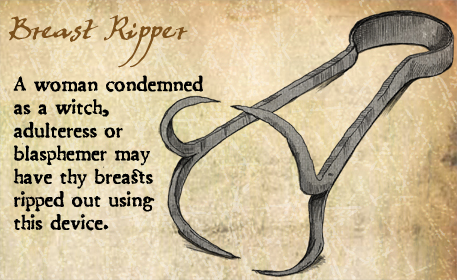
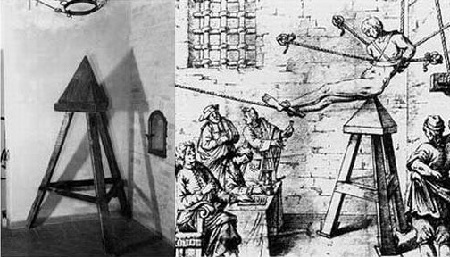
On the Judas Cradle, the victim would presumably be placed in the waist harness above the pyramid-shaped seat, with the point inserted into their anus or vagina, then very slowly lowered by ropes. The subject is tortured by intense pressure and stretching of the orifice, eventually succumbing to tears in muscle tissue that could turn septic and kill from infection, or simply being impaled.
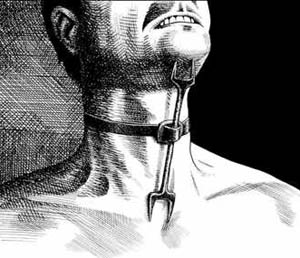
The heretic’s fork was a torture device, loosely consisting of a length of metal with two opposed bi-pronged “forks” as well as an attached belt or strap.[1]
The device was placed between the breast bone and throat just under the chin and secured with a leather strap around the neck, while the victim was hung from the ceiling or otherwise suspended in a way so that they could not lie down.[2] A person wearing it couldn’t fall asleep. The moment their head dropped with fatigue, the prongs pierced their throat or chest, causing great pain.[1][3] This very simple instrument created long periods of sleep deprivation. People were awake for days, which made confessions more likely.[1]

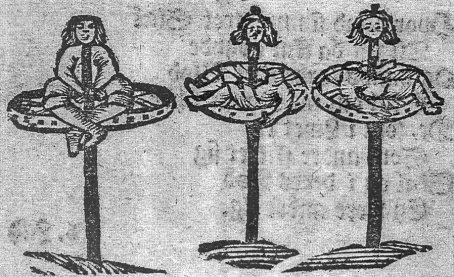
The wheel was typically a large wooden wagon wheel with many radial spokes. The condemned were lashed to the wheel and their limbs were beaten with a club or iron cudgel, with the gaps in the wheel allowing the limbs to give way and break.
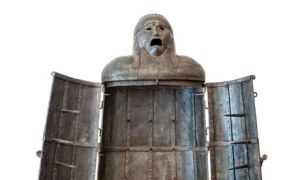
The iron maiden is often associated with the Middle Ages.[1] However, no account has been found earlier than 1793, although medieval torture devices were catalogued and reproduced during the 19th century.
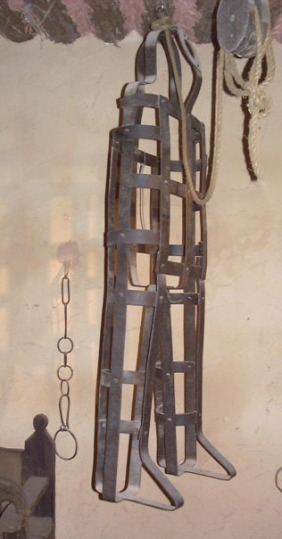
The Coffin Torture was feared throughout the Middle Ages.
The victim was placed inside the “coffin”. Torturers were well-known for forcing overweight victims into the device, or even making the “coffin” slightly larger than normal to make the victims more uncomfortable.
The period of time a victim was to be kept inside the coffin was determined by his or her crime. Very serious crimes, such as blasphemy, were punished by death inside the coffin where the victim was to be kept inside under the sun with animals eating his or her flesh.
The coffin was sometimes placed in a public plaza so the local population would congregate around it and mock the unlucky victim. Sometimes death occurred because of the hatred towards the person as others often threw rocks and other objects to further increase the pain.
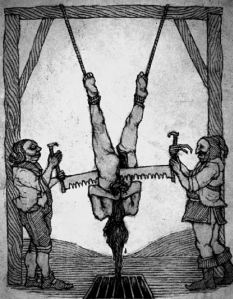
The term “death by sawing” indicates the act of sawing a living person in half, either longitudinally, or transversely, through the central body mass, either sawing the individual in half across or along the body length. Thus, decapitation by means of sawing, or dismemberment by means of sawing are merely tangential sub-themes, though some ambiguous cases might be included. Death by sawing was a method of execution reportedly used in different parts of the world, for example in Europe under the Roman Empire, in Spain, and in parts of Asia. Some of the reviewed examples are clearly legendary, and at least one source states that the method was probably never used.[2]
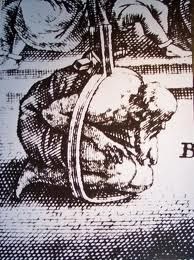
The Scavenger’s Daughter
Invented by Sir William Skivington during the reign of Henry VIII, the Scavenger’s Daughter was a compression torture device. It’s victims were placed in the fetal position, as the bars would slowly crush their body, thus, breaking their ribs and forcing their blood out of every orifice in their body.
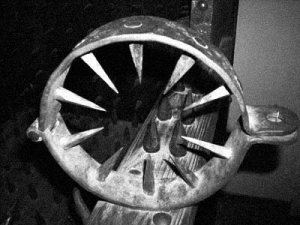
The Crocodile Tube was one of the more uncommon methods of torture during the renaissance age, but when used it killed many infidels and thieves.
The unlucky soul was placed inside a tube that was barely big enough for the person’s entrance and had teeth-like spikes jutting out from the lining of the tube like that of a crocodile. It was a slowly compressed so that it left the victim totally immobilized. The person providing the torture was only able to see the victim’s face and feet; nothing else.
To add to the pain, carbon and fire were pumped underneath the tube and the torturer could gradually heat the tube until he extracted a confession or killed the victim. Since this was one of the cruelest and most painful tortures, death was almost a sure thing. With the face and feet exposed, they would add facial mutilation and toe ripping to the torture.
If you’d like to know more about medieval torture, go to your local library or this site.
This post may contain affiliate links. Further details, including how this supports the bizarro community, may be found on our disclosure page.

